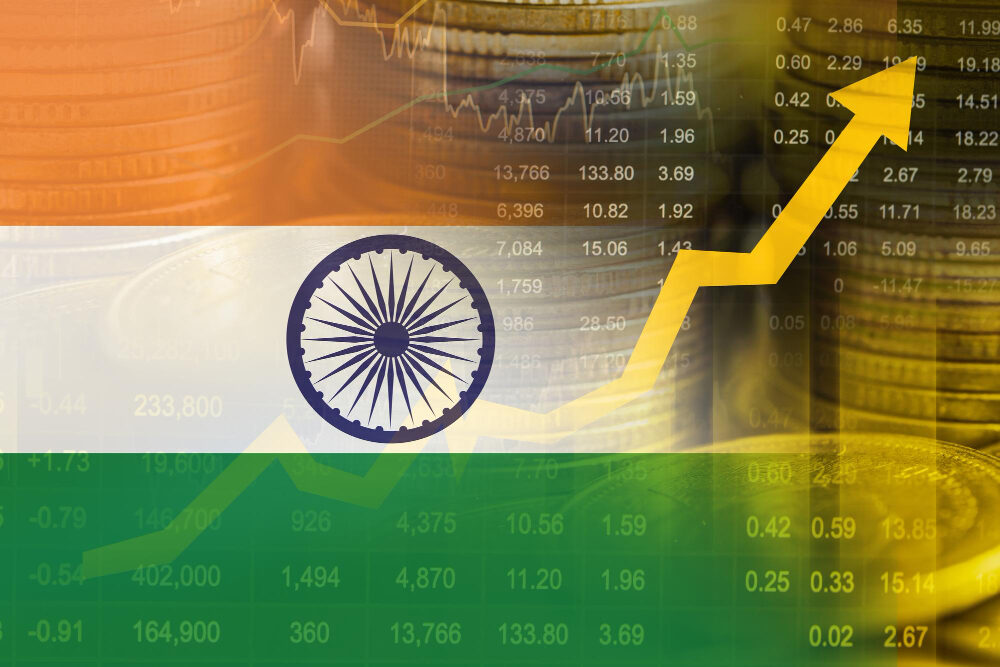When Donald Trump announced steep 50% tariffs on imports from India, many experts feared a sharp slowdown in Asia’s third-largest economy. Yet, despite these challenges, India continues to stand out as one of the fastest-growing economies in the region. How? The answer lies in a powerful mix of domestic reforms, demographic strength, and a carefully planned overhaul of the Goods and Services Tax (GST).
Let’s take a closer look at why India may still hold its growth momentum even in the face of global trade turbulence.
Tariffs vs. Reforms: A Balancing Act
Trump’s tariff move is part of a broader protectionist strategy, aimed at boosting American manufacturing by discouraging imports. For India, which exports billions of dollars’ worth of goods and services to the U.S., such measures are no small hurdle.
But here’s the twist: Prime Minister Narendra Modi’s government has been preparing a sweeping GST reform package, often described as the most significant change to India’s tax system since GST was first introduced in 2017. By cutting rates, simplifying structures, and streamlining compliance, the government hopes to put more money in people’s pockets, encourage spending, and drive demand from within.
Think of it like this: while tariffs might slow the inflow of foreign money, GST reforms are designed to unleash domestic consumption—India’s real growth engine.
Why India Still Shines in Asia
Analysts from BMI, a Fitch Solutions company, recently trimmed India’s growth forecasts slightly—from earlier projections of around 6.2% to about 5.8% in FY2025-26 and 5.4% in FY2026-27. At first glance, that might sound like a setback. But compare those numbers with most Asian economies, and India is still way ahead of the pack.
Even with a dip, India’s GDP growth is expected to comfortably outpace the likes of China, Indonesia, and other emerging Asian markets. The resilience lies in a few unique factors:
- Demographics: With a median age of under 30, India boasts one of the youngest workforces in the world.
- Consumption Power: Rising middle-class incomes mean more spending on everything from smartphones to cars to housing.
- Services Sector Strength: IT, fintech, and digital services continue to be strong global exports, cushioning any loss from tariff-hit sectors.
The GST Gamechanger
So, what exactly is changing in the GST system, and why does it matter so much?
- Simplified Tax Brackets: Multiple overlapping tax rates have been a major headache for businesses. The new system is expected to streamline rates, making compliance easier.
- Lower Rates for Essential Goods: Cutting GST on mass-consumption items means lower prices for households and a direct boost to disposable income.
- Improved Compliance and Transparency: Digital tracking and simplified filings reduce loopholes, making tax collection more efficient.
- Boost to Private Consumption: The ultimate goal—give people more purchasing power so that domestic demand becomes the backbone of economic growth.
Essentially, while tariffs may put external trade under stress, GST reforms are designed to fuel internal demand—a classic case of balancing global pressures with homegrown strength.
Fitch’s Confidence in India
Despite external shocks, global rating agencies are largely upbeat about India’s economic trajectory. Fitch Ratings recently reaffirmed India’s sovereign credit rating at ‘BBB-’ with a stable outlook, noting the country’s robust domestic demand and healthy external finances.
In simple terms: yes, tariffs sting, but India’s fundamentals—its large market, stable financial system, and steady consumption base—are keeping global investors optimistic.
Short-Term Pains, Long-Term Gains
Of course, not everything is rosy. U.S. tariffs could hit export-dependent industries like textiles, steel, and some segments of manufacturing. That may cause short-term disruptions, including job losses in affected sectors.
But here’s the silver lining: companies worldwide are already looking to diversify away from China in their supply chains, and India is one of the biggest beneficiaries of this shift. Combine that with tax reforms, digitalization, and government incentives like PLI (Production Linked Incentives), and you get a strong case for India’s medium- to long-term growth story.
Why Consumption is India’s Safety Net
Unlike many export-driven Asian economies, India’s growth model leans heavily on domestic consumption. Roughly 60% of India’s GDP comes from private spending. That means even if exports take a hit from tariffs, India still has a large, hungry consumer base driving demand.
And with GST cuts lowering costs for households, people are expected to spend more, keeping the economy buoyant.
Looking Ahead: The India Growth Narrative
India’s story isn’t about escaping global headwinds—it’s about adapting and thriving in spite of them. The combination of tariff shocks and tax reforms paints a picture of an economy that’s agile, resilient, and increasingly self-reliant.
- The short term might bring some volatility, with slower exports and sector-specific challenges.
- The medium to long term, however, looks strong, thanks to structural reforms, consumption demand, and demographic advantages.
At the end of the day, Trump’s tariffs may be a storm, but GST reforms could very well be the umbrella India needs to stay dry—and even flourish—during uncertain times.










